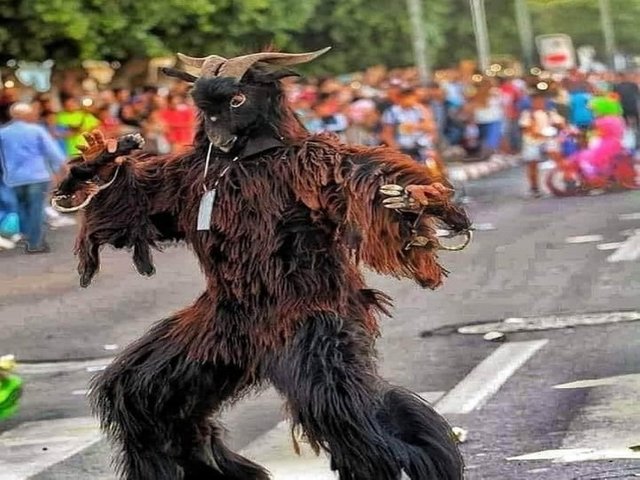"Belmon" ancient Amazigh ritual in Morocco
Moroccans wear goat or sheep skins and roam alleys and streets

They are a group of young men and children, who play the role of pet characters, with the aim of linking the past to the present and celebrating an ancient ritual called "Belmaun" or "Boughold", where they wear goat or sheep skins and roam the alleys and streets of southern Morocco, in order to excite passers-by and turn their sympathy.
Celebrating the weather of "Bougelds"is often associated with the atmosphere accompanying Eid al-Adha, where young people wear goat or sheep skins, to hide their personality, staff different accents of sound, skin of the head and horns to cover the face, and bring the similarities between them and the animals used as the sacrifice of eid.
The "Bougeld" phenomenon is more well known on the outskirts of the cities of Tiznet, Dashera and Inzcan (southern Morocco), where its youth have made a number of improvements to the phenomenon, taking it out of the simplicity it was known for in the past, according to Jama Bandir, a researcher in Moroccan culture and heritage.
Ahmed Saber, former dean of the Faculty of Arts and Humanities at Ibn Zahra University in Agadir, told Anatolia that "The city of Inzcan has been able to revive and preserve a precious heritage from extinction, given its ancient origins and historical documents found in many African countries."
"The Boughold phenomenon can be seen as a manifestation of the rejection of the political reality of living, where all political figures, institutions and events are ridiculed as a form of rejection of this reality, in its political, economic and social manifestations," Ahmed Obloch, a researcher on Moroccan heritage, told Anatolia.
"The Bellamon weather is a social ritual in which relations of solidarity and social solidarity between different groups of society are re-strengthened," he said.
He noted that the phenomenon was a preventive remedy for certain social diseases, through which practices such as sexual harassment, infidelity, homosexuality, theft and others were exposed (through representative street scenes in which leather-clad people criticized those phenomena).
Some Amazigh tribes in the region consider the weather "a moment of reconciliation with the community and a process of venting all the tabs and social sins," Obloch said.
He said that "the interpreted readings of the Balochid rituals differ between the anthropological, religious, cultural, social and political reading of a ritual filled with insinuations, symbolic condensation and sociological, psychological and ethnographic connotations that are deep in history, and the origins of this phenomenon are ancient, practiced in the North African region, before the entry of Islam in the 7th century AD."
"This ritual can be considered, from the rite of passage from nature to the state of culture, or a time-consuming chant of our natural roots, and a manifestation of modernity and deception in societies of violence and consumption."
With regard to his interpretation of some of the rituals accompanying the phenomenon, by the ritual of blood and eucharist, Oplos said that "the ritual in question refers to the sacrifice of eid, while the dress of the lamb's skin means the eucharist provided to cleanse the desecration of material life and travel through the history of mankind, which is tattooed by the struggle between the forces of good and evil."
While some may regard the ritual of "Bogelds" as a manifestation of worship and sanctification of animals, or fear of supernatural forces that may be hidden in the skin and horns of goats, The Researcher Obloch considered that "the presence of religious weather in the minds of some, such as the presence of the offering of goats in many religious rituals, especially in shrines and shrines, and in non-religious rituals such as sorcery, the presence of a sheep, the ritual of bringing rain, fertility and children."
The cities adjacent to Agadir province in the south-west of Morocco host the amazigh carnival of "Belmaun Bodmaun" (leather and masks) every year, held for a week after Eid al-Adha each year, amid calls to protect this heritage from extinction and exotic customs.
